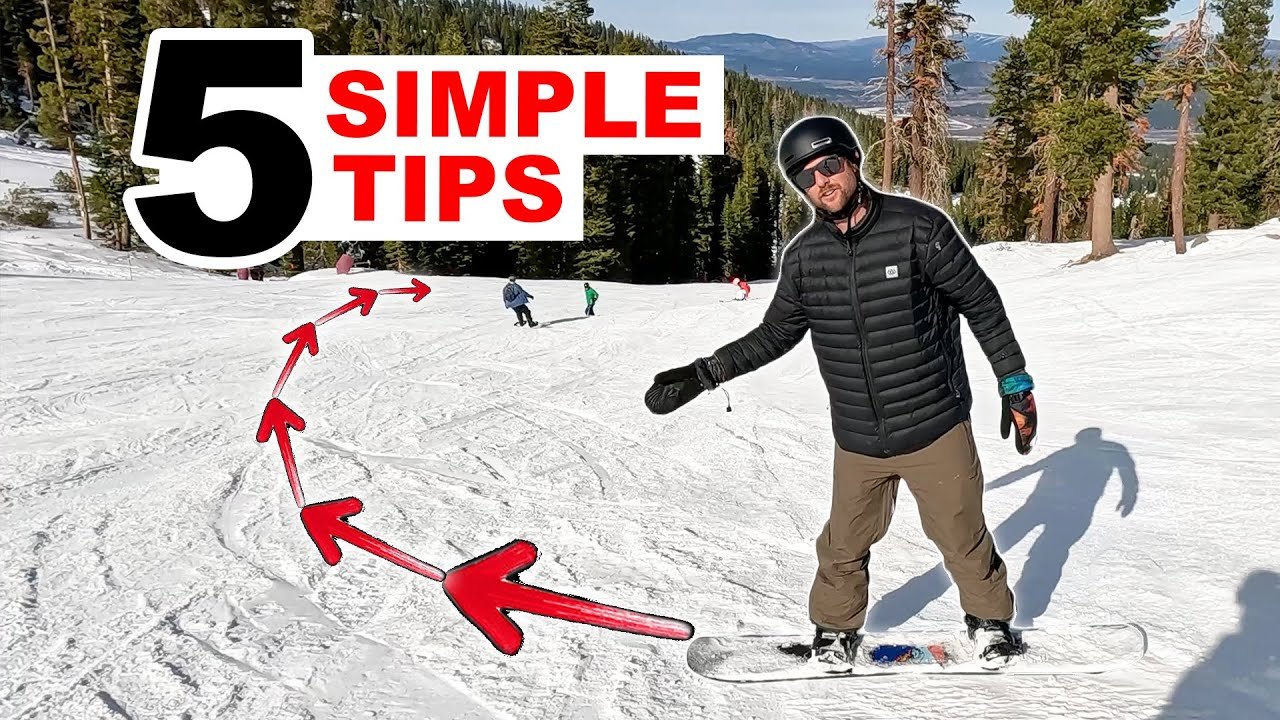
5 Simple Tips For Your First Snowboard Turn
In the video titled “5 Simple Tips For Your First Snowboard Turn” by SnowboardProCamp, the narrator offers helpful advice for those attempting their first snowboard turn. The video begins with the narrator introducing themselves and expressing their desire to provide guidance for tackling the challenging first turn. They proceed to outline the five tips that will be covered, emphasizing the importance of building confidence and control on toe slides, leaning forward to initiate the turn, sliding across the slope before committing to a turn, and finally, slowing down and preparing for each turn. By following these tips, beginners can overcome their initial difficulties and successfully navigate their first snowboard turn.
The narrator of the video, SnowboardProCamp, shares their personal experience and provides practical advice for new snowboarders attempting their first turn. They emphasize the significance of gaining confidence through practice and familiarizing oneself with toe sliding. By sliding across the slope and reaching down towards the snow, beginners can successfully navigate their first turn. Another essential tip is to turn the shoulders towards the top of the mountain, allowing for better balance and control during the turn. Lastly, the video encourages beginners to slow down and control their speed, ensuring they are prepared for each turn. Overall, these five simple tips serve as a helpful guide for anyone looking to conquer their first snowboard turn.

Tip 1: Practicing Toe Sliding
Developing confidence to let your board go straight
One of the biggest challenges for beginners in snowboarding is being comfortable enough to let their board go straight down the slope. To develop confidence in this aspect, a good technique to practice is toe sliding. By practicing toe sliding, riders can gain the necessary experience and control to confidently let their board go straight and commit to their toe turn. It is important to note that it is easier for beginners to do heelside turns, while toeside turns can be more challenging. Spending ample time practicing toe sliding will help riders become more comfortable and confident in their abilities.
Spending time on your toes
In order to prepare for executing a successful toe turn, it is crucial to spend a significant amount of time on your toes. This means sliding down the slope using your toes as the primary point of contact with the snow. By doing so, riders can become accustomed to the feeling of being on their toes and gain better control of their board. This practice will help when the time comes to execute a toe turn since riders will already be comfortable and familiar with the position and movement.
Tip 2: Reaching Front Hand Towards the Snow
Helping to commit to going straight
One of the difficulties beginners face when attempting their first turn is committing to going straight. To overcome this challenge, a helpful technique is to reach your front hand towards the snow. By doing so, riders shift their weight forward, aiding in getting the board to go straight down the hill. This action helps in committing to the turn and getting the board in the correct position to execute a successful turn.
Leaning weight forward to get board going straight
Another aspect of committing to the first turn is leaning your weight forward. By doing this, riders can help get their board going straight down the slope. Having the weight forward assists in gaining control and stability, making it easier to bring the toe slide around and execute the turn successfully. This technique allows riders to have better control over their speed and the direction of their board.
Tip 3: Sliding Across the Slope
Starting slide across the slope
To make committing to the first turn easier, a helpful technique is to start sliding across the slope in the direction you want to turn. This means beginning the turn by sliding at an angle across the slope instead of attempting to go straight back. By starting the turn at an angle, riders reduce the distance they need to commit to letting their board go straight down the hill. It makes the process less intimidating and allows riders to ease into the turn more comfortably.
Reducing angle to let board go straight
Sliding across the slope and reducing the angle allows riders to let their board go straight more easily. When the board is at a 45-degree angle, it is simpler to commit to letting it go straight down the hill. This technique is particularly helpful for beginners who may be hesitant to fully commit to the turn. By reducing the angle, riders have a smoother transition from the sliding position and can confidently move onto the new edge and continue the turn.
Easier commitment to letting board go straight
Sliding across the slope and reducing the angle makes it easier for riders to commit to letting their board go straight. Instead of having to fully commit to letting the board go straight down the hill from a standing position, starting at an angle allows for a gradual and more manageable commitment. This technique improves stability and control and makes the first turn less daunting for beginners.
Tip 4: Turning Shoulders to the Top of the Mountain
Importance for toe turn
When performing a toe turn, it is important to focus on turning your shoulders to face the top of the mountain. This technique helps in committing to the turn and shifting the rider’s weight onto their toes. While sliding on heels is relatively easy since everything is facing down the hill, turning on your toes can be more challenging. By consciously thinking about turning the shoulders to face the top, riders can better commit to the edge and maintain balance and control.
Making commitment to edge easier
The act of turning the shoulders to the top of the mountain makes committing to the edge easier. By consciously directing the upper body towards the top, riders can mentally prepare themselves for the turn. This technique provides a sense of stability and aids in committing to the edge, making it easier to execute the turn successfully. It helps riders feel more balanced and in control, allowing them to gradually increase their speed and confidence.
Feeling balanced and controlling speed
By turning the shoulders to the top of the mountain, riders can achieve a sense of balance and better control their speed. This technique promotes a more centered body position, with weight distributed evenly between the two feet. Having proper balance helps riders maintain control over the direction and speed of their turns. It enables riders to have a smoother and more controlled descent down the slope.
Tip 5: Slowing Down and Controlling Speed
Mentally visualizing the turn
Before each turn, it is helpful to mentally visualize the desired outcome. Taking the time to imagine the turn in your mind allows you to create a plan and prepare for each step. By visualizing the turn, riders can anticipate the movements and actions required, leading to a smoother and more controlled execution.
Preparing and making a plan
After mentally visualizing the turn, it is important to prepare and make a plan. Knowing what actions need to be taken and when to execute them helps riders maintain control over their speed. By having a plan in mind, riders can approach each turn with confidence and better execute the necessary movements.
Taking each turn slowly
When learning to turn, it is crucial to take each turn slowly. By approaching turns at a slower pace, riders can maintain better control and focus on their technique. This allows for a more gradual and controlled progression, helping riders build confidence and improve their overall snowboarding skills.
Preparing for the next turn
After completing a turn, it is essential to prepare for the next one. Slowing down and controlling speed after each turn allows riders to assess their positioning and make any necessary adjustments before moving on to the next turn. Taking the time to prepare and regroup ensures a smoother transition between turns and promotes better overall control and stability.
Conclusion
In this article, we have discussed five simple tips to help beginners with their first snowboard turns. Practicing toe sliding is crucial for developing confidence and committing to the turn. Spending time on the toes prepares riders for executing successful toe turns. Reaching the front hand towards the snow and leaning weight forward helps with committing to going straight and getting the board in the correct position. Sliding across the slope reduces the angle and makes it easier to commit to letting the board go straight. Turning shoulders to the top of the mountain is essential for successful toe turns, providing balance and control. Slowing down and controlling speed allows riders to mentally visualize each turn, make a plan, and prepare for the next turn. By practicing these tips and techniques, beginners can improve their snowboarding skills and become more confident on the slopes. Remember to always practice safely and be mindful of your surroundings. Happy snowboarding!
